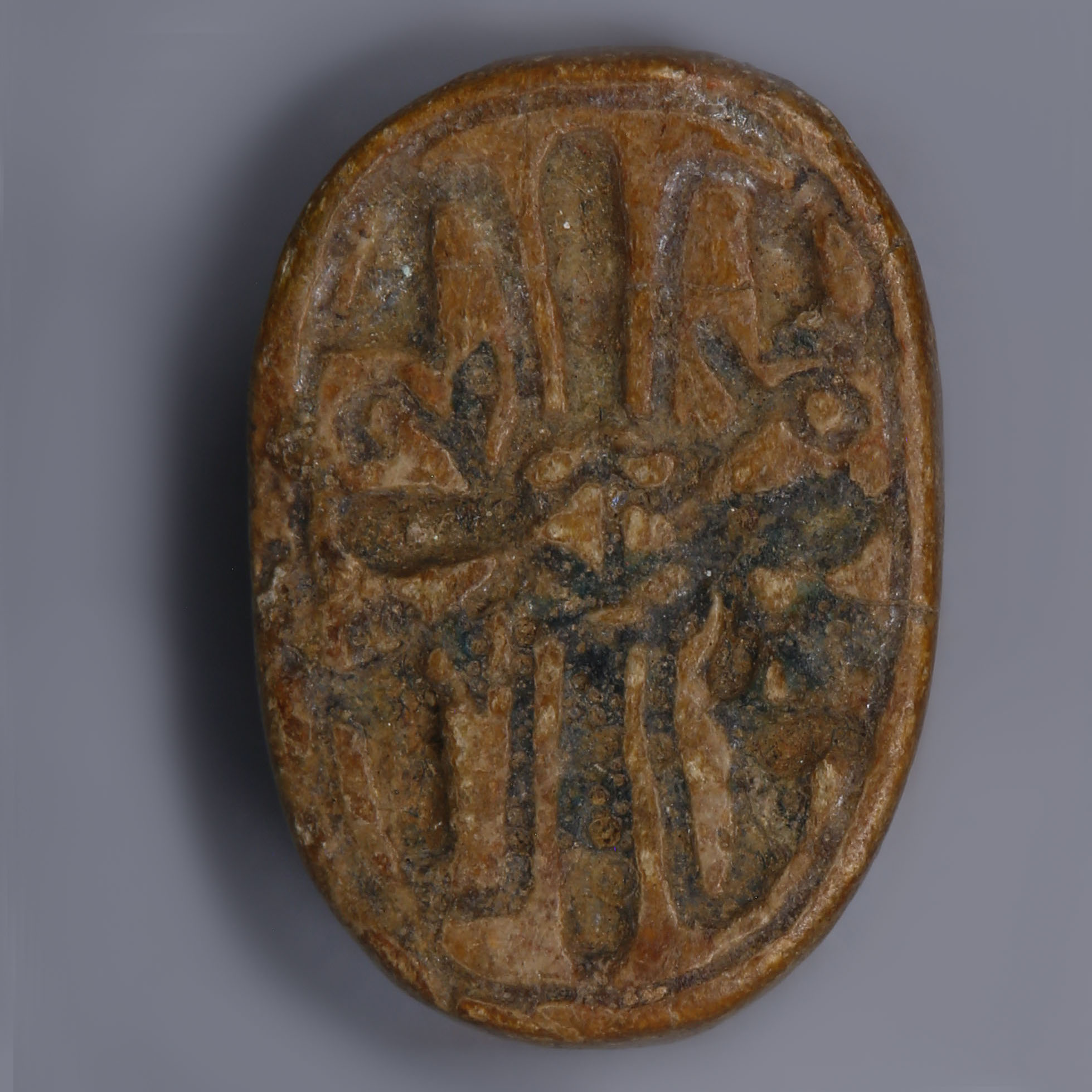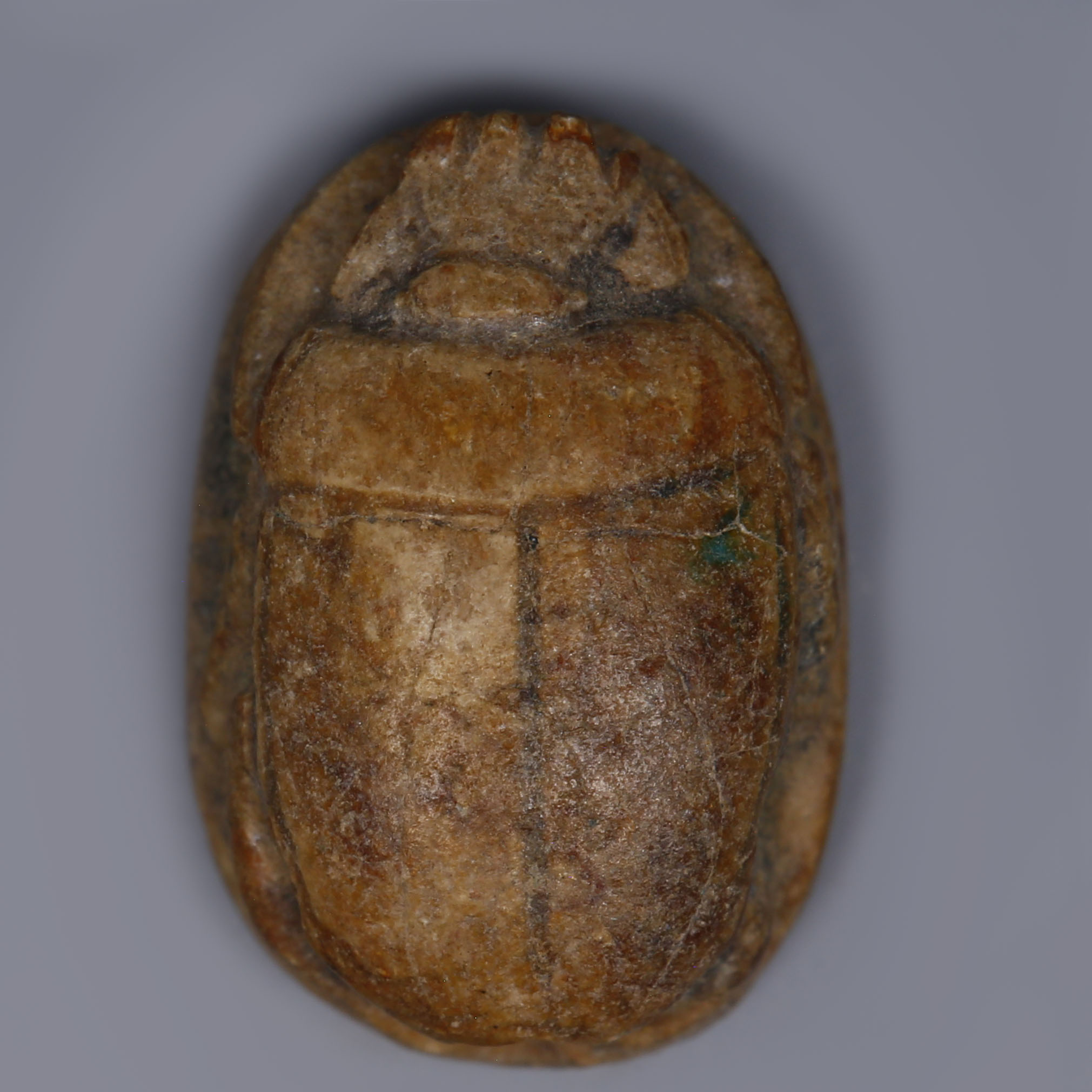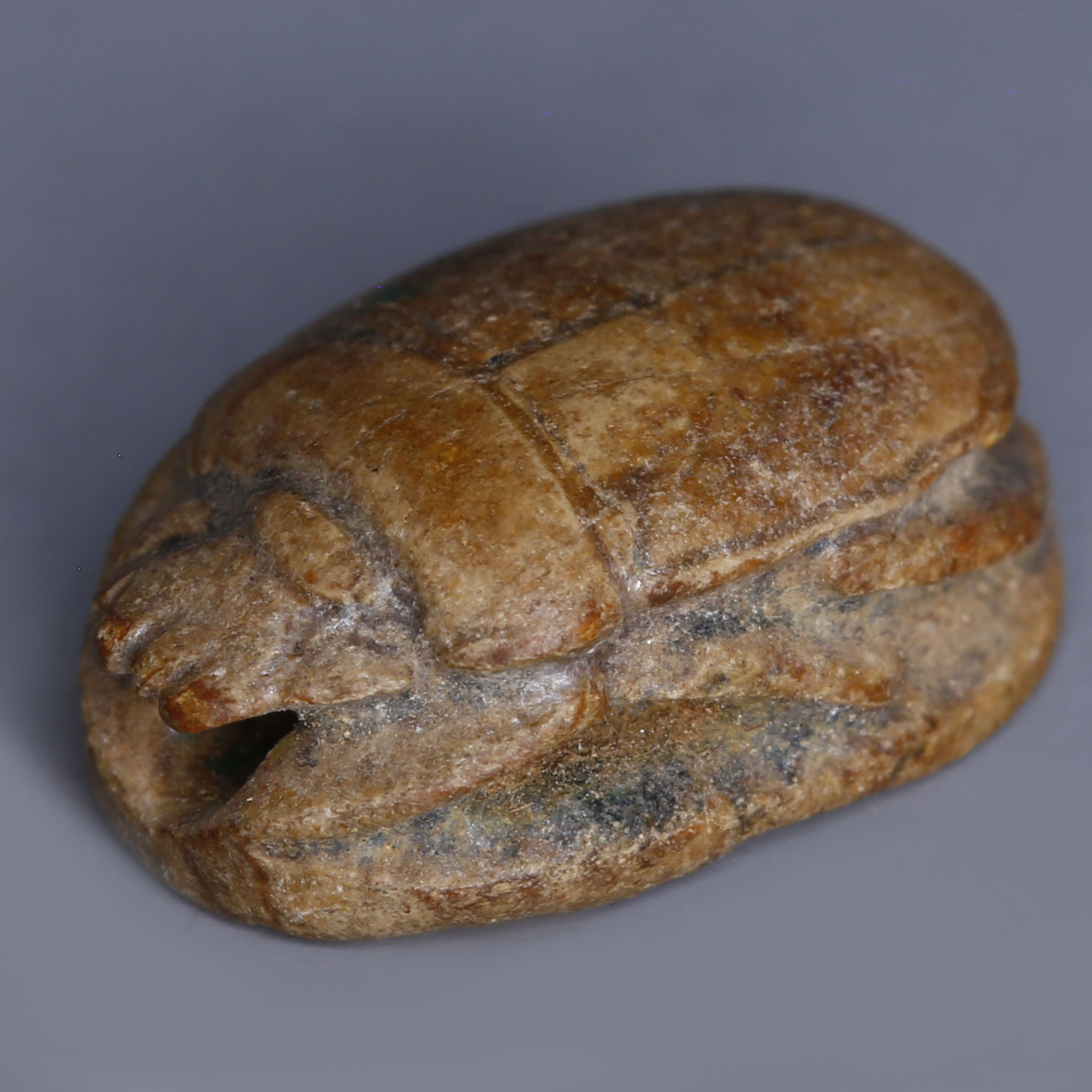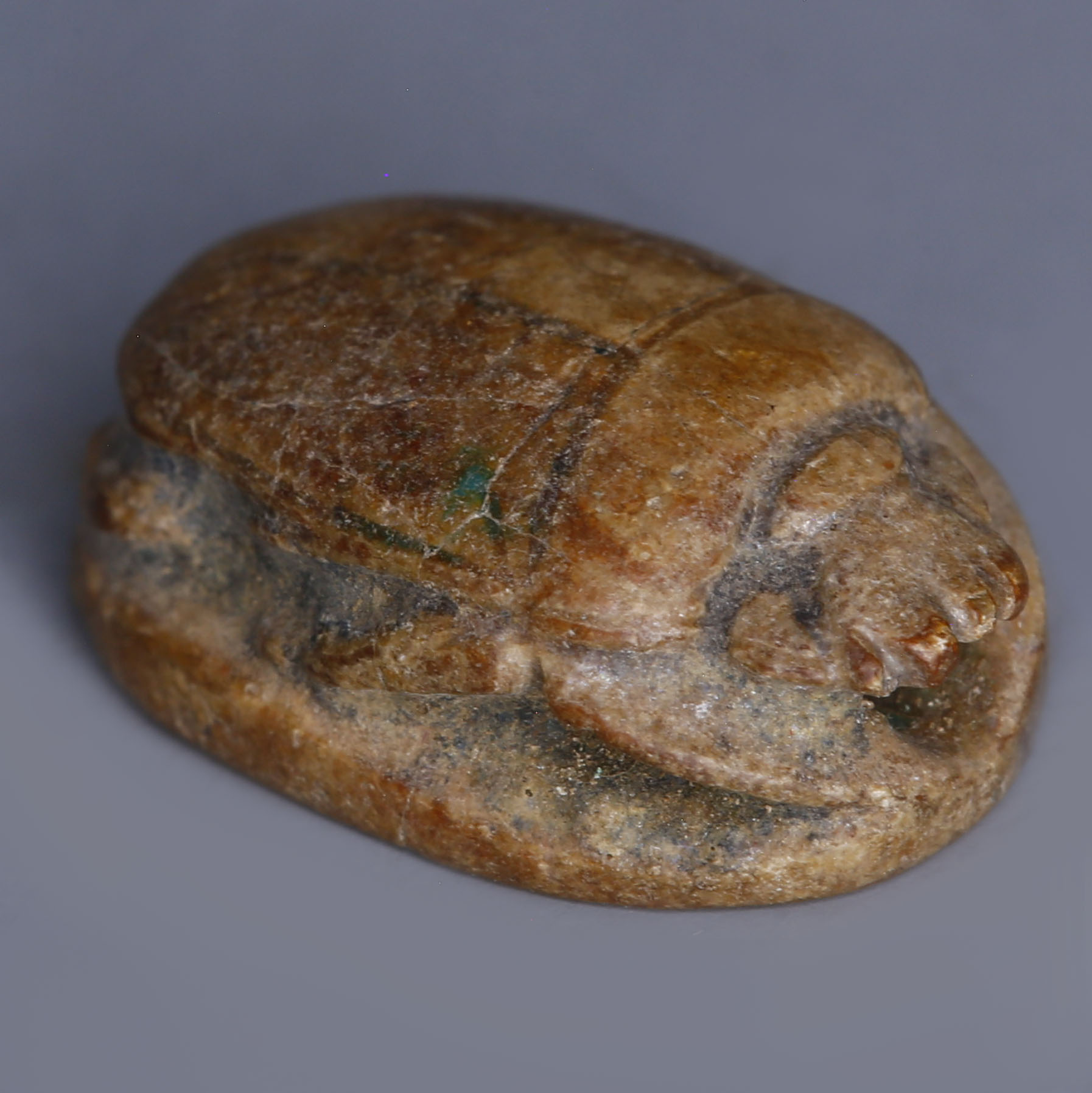This particular scarab bears resemblance to those carved by Canannite craftsmen during Egypt’s Hyksos period. The Hyksos period, during the late Middle Kingdom, was a period of foreign rule by a succession of Asiatic chieftains, hailing from the Levant. Craftsmen followed on the tradition of using scarabs as protection amulets however their style and motifs were different. Hieroglyphs were used simply for the apotropaic properties, rather than specific meaning. This is an example of how Egyptian motifs were adapted into the Canaanite repertoire, because the head strongly resembles the Egyptian representation of the Hathor emblem (often in the shape of a Hathor sistrum). On scarabs, the Canaanite “Hathor” head is paired with geometric decorative elements, plants, or sometimes by signs. It can be distinguished from the Egyptian Hathor motif because of the presence of two or three long extensions on her head.
To find out more about Ancient Egyptian amulets please see our relevant blog post: Egyptian Amulets and their Meanings.



